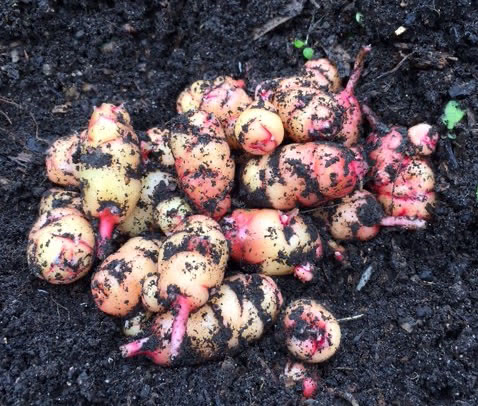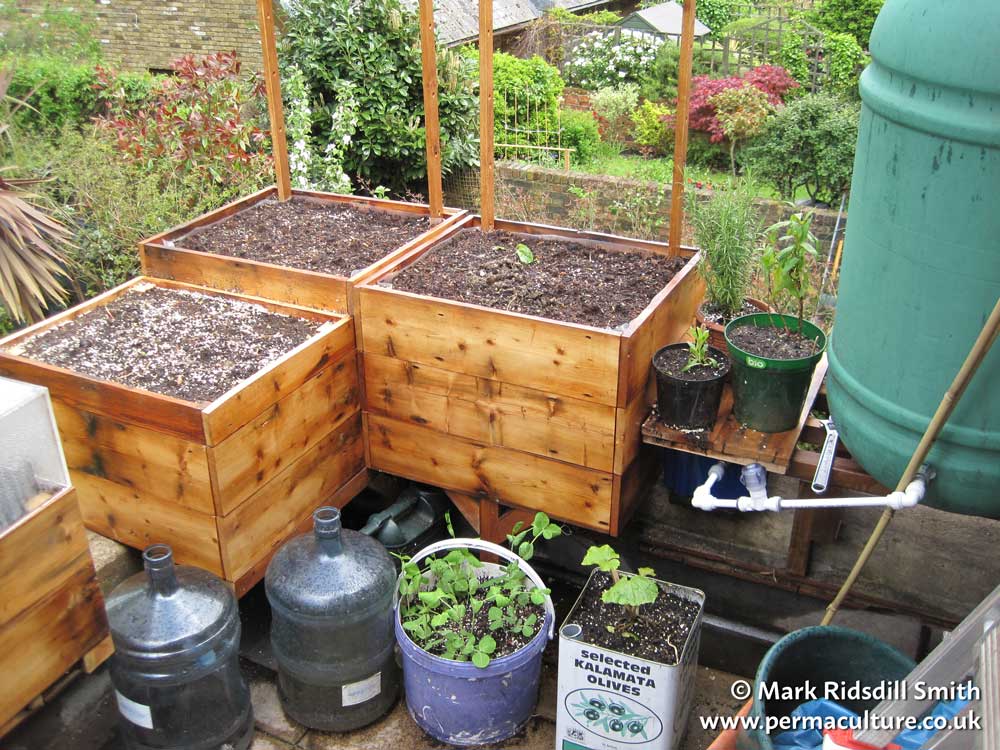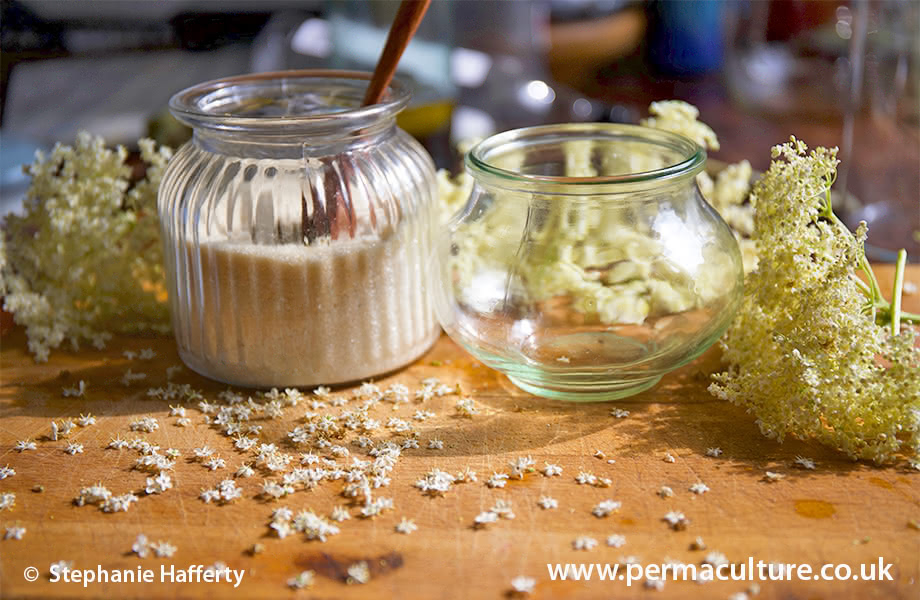Oca is a South American tuber with a lemony taste and pretty leaves. In warm climates Oxalis tuberosa (Oxalidaceae) is a perennial herbaceous plant and can overwinter as underground stem tubers known as uqa in Quechua. The plant is traditionally cultivated in the central and southern Andes for its tubers, which are used as a root vegetable.
In New Zealand it is known as a yam (although it isn’t a true yam) and there are now a range of colours, including yellow, orange, pink, apricot, as well as the traditional red.
In more temperate northern climates, Oca is frost sensitive and is an annual. It has pretty foliage and looks good in a vegetable garden, is easy to grow and harvest. It can tolerate poor soil. What stops its growth is the lower daylight hours of late autumn/winter and so there are just a few tips that can make your harvest larger and with bigger tubers.
I grow this crop in my no dig garden. I usually plant out the tubers direct into the bed in May after the last frosts and harvest before the first ground frosts in October / November as the tubers are delicate and will rot in the ground if it is too cold.
This is quite a short season and so, like yacon, I would recommend starting each Oca tuber off in a pot in the greenhouse or polytunnel in February in maximum light and planting it out in the green once there is no risk of frost. That way, you help the plant to get away faster and extend the growing season and therefore the time for the tubers to swell.
At the end of the season I cover the Oca to protect it from the first light frosts and again extend the season. This year I used Enviromesh because that is what I had to hand. Fleece would be better.

Harvesting is easy. Once the leaves have been hit by frosts and before a hard ground frost gently place a hand fork under the foliage and pull. The roots with tuber will come up in one go. You don’t need to dig deep as the tubers grow near the surface of the soil. Compost the foliage and separate out the tubers.
Wash the tubers immediately and leave to drain and dry. Then place in trays and leave on a sunny windowsill for a week. Oca is high in oxalic acid like spinach and benefits from sunlight which decreases the organic acid content and thereby increases the sweet taste of the Oca.
Store in a cool, dark place. Set aside your biggest, healthiest tubers for replanitng in early Spring. Put them into the light and chit like potatoes. They will soon respond.
By selecting the best, you are chosing tubers that will grow into strong plants that will be able to take advantage of our light levels. You can also select for lower levels of oxalic acid (by colour) once you have started eating your harvest.
Oca is one of the highest vegetable sources of carbohydrate and energy. The tubers are a good source of pro-vitamin A (beta carotene), and also contain potassium, vitamin B6 and small amounts of fibre.
Oca can be eaten raw with pepper and lemon juice. It tastes good roasted or boiled and served like potatoes and can be added to stews and soups.
Oca doesn’t take up much room in a vegetable garden and adds pretty foliage and provides an interesting autumn/winter source of food.
Maddy Harland is the co-founder and editor of Permaculture magazine and author of Fertile Edges – Regenerating the land, culture and hope.











